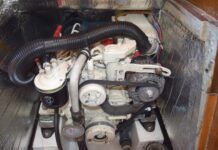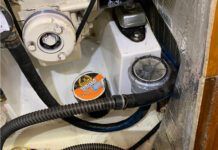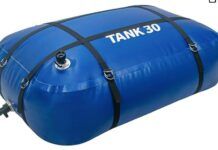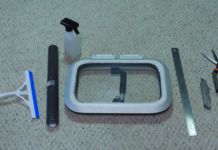I replaced my boat’s 20-inch, single-line stanchions with 24-inch double-line stanchions as I have two young children (2 and 3 years old). What kind and thickness lifeline do you recommend? (I plan to put a net over them when done.) I understand many sailors eschew coated as they hide corrosion, but this boat will always be in fresh water. The lines I’m replacing are 3/16-inch coated.
Mike Speedy,
1993 Beneteau First 265,
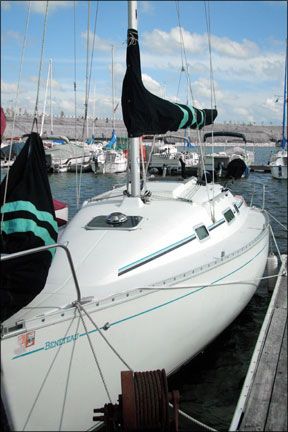
Photo courtesy of Mike Speedy
288
Indianapolis, Ind.
The International Sailing Federation (ISAF) and other regulatory bodies frown upon using PVC-coated 7×7 wire for lifelines. As you noted, this is because lifelines should be easily inspected for corrosion or other signs of possible failure. The corrosion that can take place under the coating is not just a saltwater issue. Air quality and other factors also can lead to corrosion.
We suggest uncoated, 1×19 stainless-steel wire with swaged terminals—3/16-inch wire for upper lifeline and 1/8 inch for the lower. Uncoated 1×19 is easy to inspect, and even though the top wire is overkill from a tensile-strength perspective, it will be durable and almost as comfortable to lean against as the coated wire. It’s also more convenient to lash netting to than a smaller-diameter option.
Incorporating opening gates and netting can be difficult if two stanchions are not available at the lifeline gate. Eliminating the gates removes a weak link. However, with small children boarding your boat, this likely is not an option, so be sure that the gate hardware cannot be inadvertently opened.
Stains Be Gone
I am planning to varnish my interior teak, but there are dark water stains in some areas. How do I get rid of them?
Mike Slinn,
Jedi, 1985 Beneteau First 435,
Half Moon Bay, Calif.
First, you should determine the cause of those water stains—otherwise, you’ll find yourself repeating these steps in short order. Once you’ve solved the problem, prep for the varnish as you typically would. (We’ll assume that the teak already has a finish on it, so sand it until only a thin top layer is left.) Then you’ll want to remove the stains with an oxalic acid-hot water solution or an oxalic-based teak cleaner. Paint the mixture onto the stained area using a foam brush or small sponge. Start with a localized effort. Apply several coats. Allow the solution to soak in overnight. The next day, neutralize the bleach with a Borax-hot water solution and then rinse the area thoroughly. Any acid left in the wood will ruin the finish.
Keep in mind that interior teak typically cannot stand up to the aggressive sanding and bleaching that cockpit coamings or toerails can tolerate. It is important to be minimally invasive. Some brightwork enthusiasts suggest a bleach-and-blend method using a thin teak stain and diluted bleach. Teak products-maker Teakdecking Systems recommends using K2R cleaner (













